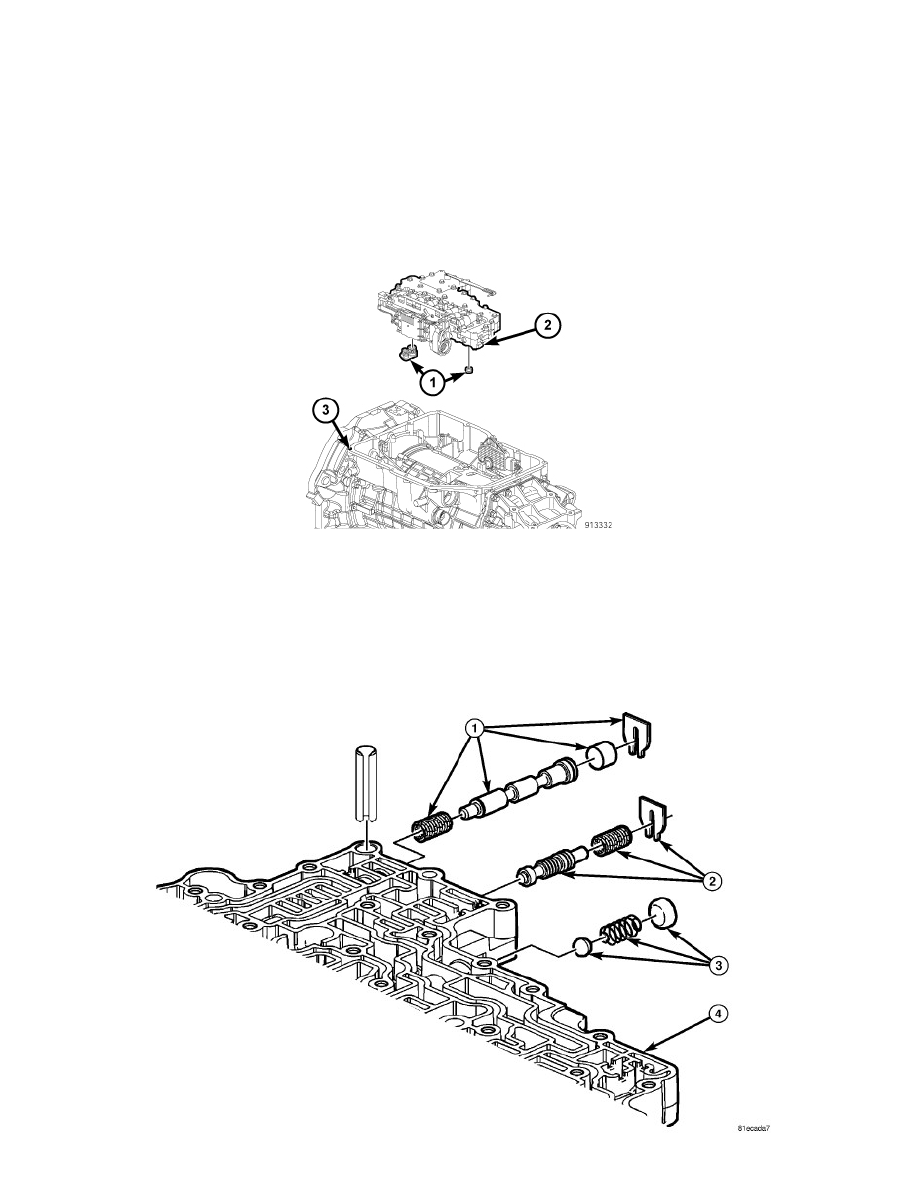Durango 2WD V8-5.7L Hybrid (2009)

replaced.
Inspect the valves and plugs for scratches, burrs, nicks, or scores. Minor surface scratches on steel valves and plugs can be removed with crocus cloth.
Do not round off the edges of the valve or plug lands. Maintaining sharpness of these edges is vitally important. The edges prevent foreign matter
from lodging between the valves and plugs and the bore.
Inspect all of the valve and plug bores in the valve body. Use a penlight to view the bore interiors. Replace the valve body if any bores are distorted or
scored. Inspect all of the valve body springs. The springs must be free of distortion, warpage, or broken coils.
Trial fit each valve and plug in its bore to check freedom of operation. When clean and dry, the valves and plugs should drop freely into the bores.
Valve body bores do not change dimensionally with use. If the valve body functioned correctly when new, it will continue to operate properly after
cleaning and inspection. It should not be necessary to replace a valve body assembly unless it is damaged in handling.
Inspect all the fluid seals (1) in the transmission case. Replace any seals that are cracked, distorted, or damaged in any way. These seals pass fluid
pressure directly to the clutches. Any pressure leak at these points may cause transmission performance problems.
Valve Body - Assembly
ASSEMBLY
NOTE: Lubricate all the valve body valves in clean DEXRON(R) VI ATF before final assembly.
